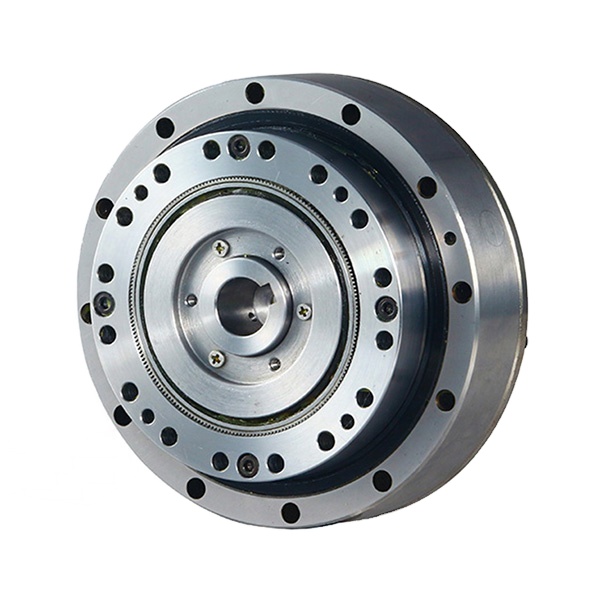The reason why humanoid robots have attracted so much attention lies in the fact that they integrate various advanced technologies such as AI, high-end manufacturing, and new materials, and are expected to play an important role in multiple fields. In the field of industrial manufacturing, it can undertake repetitive and highly dangerous work, improving production efficiency and quality. In terms of emergency rescue, it can enter dangerous areas and reduce casualties. In the medical field, it can assist doctors in performing surgeries and reduce the workload. In the field of elderly care, it can also take care of the daily life of the elderly.
Among the numerous key technologies of humanoid robots, the harmonic reducer, as a core component, is of self-evident importance. Reducers can mainly be classified into harmonic reducers, planetary reducers and RV reducers. Among them, harmonic reducers, with their unique advantages, have become the mainstream choice for humanoid robots. It has the advantages of small size, light weight, high precision, large transmission ratio and strong carrying capacity, and can meet the movement requirements of humanoid robots with high precision and high torque under the conditions of limited space and weight.

Although the harmonic reducer is small, it contains tremendous energy and plays a key role in the motion control of humanoid robots. So, how does it work?
The harmonic reducer is mainly composed of four basic components: the wave generator, the flexible gear (flexible wheel), the flexible bearing and the rigid gear (rigid wheel). Its working principle is based on the planetary gear transmission principle. It uses a wave generator to make the flexible gear undergo controllable elastic deformation and mesh with the rigid gear to transmit motion and power. When the wave generator is installed on the flexible wheel, since the length of the wave generator is slightly greater than the inner diameter of the flexible wheel, the flexible wheel will be stretched into an oval shape. In the major axis direction of the ellipse, the teeth of the flexible gear are fully engaged with those of the rigid gear. However, in the short-axis direction, the two are completely separated. With the continuous rotation of the wave generator, the deformation of the flexible gear is constantly changing, and its meshing state with the rigid gear is also constantly changing, from meshing in, meshing out, disengaging, and then back to meshing in, repeating this cycle, thereby achieving the slow rotation of the flexible gear relative to the rigid gear in the opposite direction of the wave generator.
This unique working mode makes the harmonic reducer have many remarkable features. Its structure is relatively simple, with only three main components, and the input and output shafts are on the same axis. This not only reduces the number of parts but also makes installation more convenient. It is small in size and light in weight. Compared with general reducers, under the same output torque, the volume of harmonic gear reducers can be reduced by 2/3 and the weight can be reduced by 1/2. This is undoubtedly a huge advantage for humanoid robots that have strict restrictions on space and weight. The transmission ratio of harmonic reducers is large. The transmission ratio of single-stage harmonic gear transmission can reach 70 to 500, and in some devices, it can even reach 1000. The multi-stage transmission speed ratio can even exceed 30,000, which can meet the requirements of humanoid robots for different movement speeds and torques. Its motion accuracy is high. Under the same gear accuracy grade, the transmission error is only about 1/4 of that of ordinary cylindrical gear transmission. Meanwhile, the deformation of the flexible gear can be increased by slightly changing the radius of the wave generator, making the tooth clearance very small, and even achieving side-clearance meshing. It is suitable for reverse rotation and ensures the accuracy of the humanoid robot's movements. In addition, the harmonic reducer can also transmit motion in a closed space. By taking advantage of the flexibility of the flexible gear, it achieves valuable functions that other existing transmissions cannot match.
Based on these outstanding features, harmonic reducers have found their application in humanoid robots, mainly used in light-load parts such as the forearm, wrist, and hand. In these parts, there are high requirements for volume and flexibility. The characteristics of harmonic reducers, such as small size, light weight, high transmission ratio and high precision, enable them to fully leverage their advantages and assist robots in performing various flexible and precise actions. For instance, when a robot shakes hands with a human, the harmonic reducer at the wrist can precisely control the force and Angle, making the handshake action natural and smooth. When the robot operates small tools, the harmonic reducer in the hand can ensure the accuracy and stability of the movements and complete delicate operation tasks.
If you need information about our products, please contact us at info@arcsecobot.com
 Hangzhou Aike Automation Co., Ltd.
Hangzhou Aike Automation Co., Ltd.